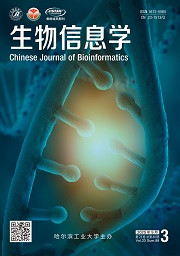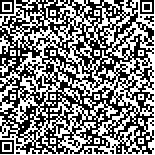| 引用本文: | 陈子睿,杨博然,何田韵,李建,周光华.基于迁移学习的空间转录组数据[]解卷积算法[J].生物信息学,2025,23(1):40-49. |
| CHEN Zirui,YANG Boran,HE Tianyun,LI Jian,ZHOU Guanghua.A deconvolution algorithm based on transfer learning for spatial transcriptomics[J].Chinese Journal of Bioinformatics,2025,23(1):40-49. |
|
| 摘要: |
| 空间转录组(Spatial transcriptomics, ST)测序技术可以捕获多个细胞的空间位置信息,但无法达到单细胞分辨率,阻碍了对细胞类型异质性空间模式和基因表达特异性的解析。针对ST数据,本文提出了基于DenseNet网络结构和CORAL域自适应理论的细胞类型解卷积算法(STDN)。STDN通过学习引入的单细胞转录组(Single cell RNA sequencing, scRNA-seq)数据的细胞类型信息,利用迁移学习模型将其迁移到ST数据上,从而达到预测ST数据中每个捕获位点(Spot)的细胞类型组成及比例的目的。本文通过4组scRNA-seq真实数据及模拟的配套ST数据,表明STDN可以有效地恢复细胞类型转录谱及其在Spots内的比例,且优于其它解卷积算法。STDN对小鼠海马体和人类胰腺导管腺癌的ST数据进行解卷积,确定了组织中的多种细胞类型,解析了组织和癌症的高度异质性,为研究疾病的致病机理奠定了基础。 |
| 关键词: 空间转录组数据 解卷积 DenseNet CORAL |
| DOI:10.12113/202311005 |
| 分类号:O213; |
| 文献标识码:A |
| 基金项目: |
|
| A deconvolution algorithm based on transfer learning for spatial transcriptomics |
|
CHEN Zirui1, YANG Boran1, HE Tianyun1, LI Jian2, ZHOU Guanghua3
|
|
(1.School of Mathematics, Harbin Institute of Technology, Harbin 150001, China;2. Chengdu Medical College, Chengdu 610500, China;3. Center of Statistics and Health Informatics, National Health Commission of Peoples Republic of China, Beijing 100044, China)
|
| Abstract: |
| Spatial transcriptomics sequencing technology captures spatial location information of multiple cells, but single-cell resolution cannot be achieved, which hampers the analysis of spatial patterns of cell type heterogeneity and gene expression specificity. The cell type deconvolution algorithm (STDN) based on DenseNet network structure and CORAL domain adaptive theory is proposed for spatial transcriptomics data. STDN learns cell type information about introduced single-cell RNA sequencing (scRNA-seq) data and migrates it to ST data using a transfer learning model. Thus, the purpose of predicting the cell type composition and proportion of each capture site (Spot) in the ST data is achieved. In this paper, four factual scRNA-seq datasets and simulated matching ST datasets show that STDN can effectively recover cell type transcription profiles and their proportions in Spots, and is superior to other deconvolution algorithms. By deconvolution of ST data from mouse hippocampus and human pancreatic ductal adenocarcinoma, STDN identifies multiple cell types in tissues, resolves the high heterogeneity of tissues and cancers, and laid a foundation for studying the pathogenesis of the disease. |
| Key words: Spatial transcriptomics data Deconvolution DenseNet CORAL |






